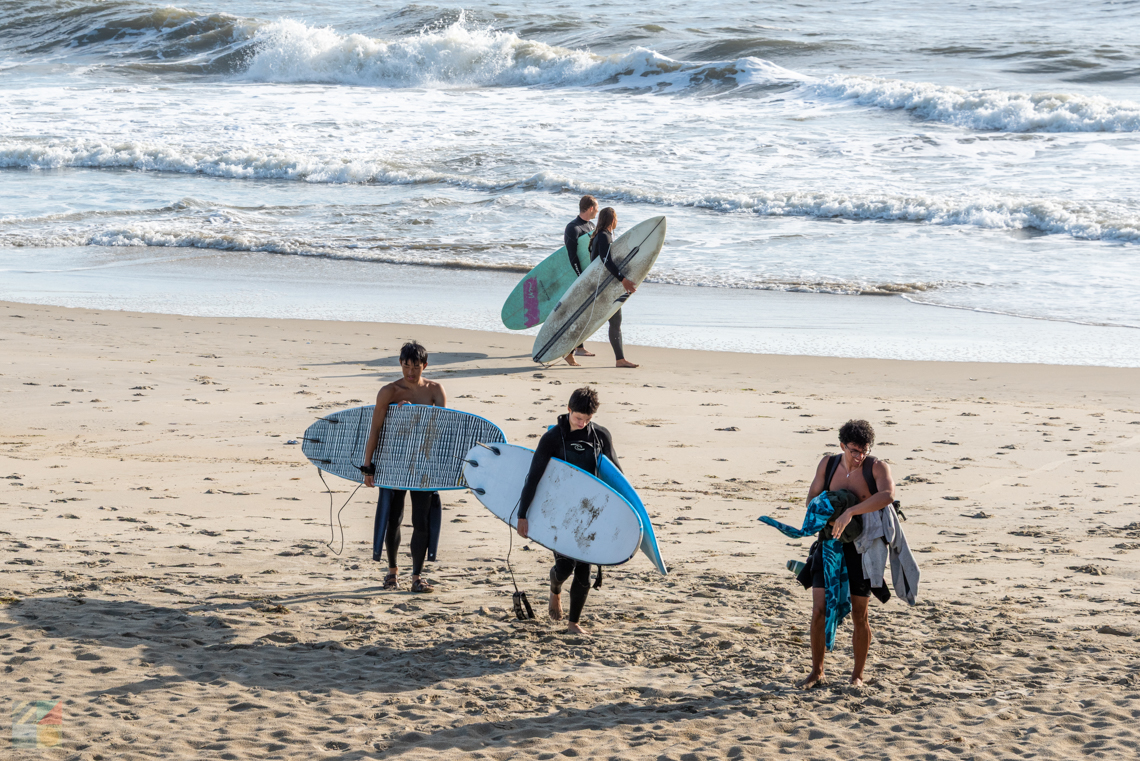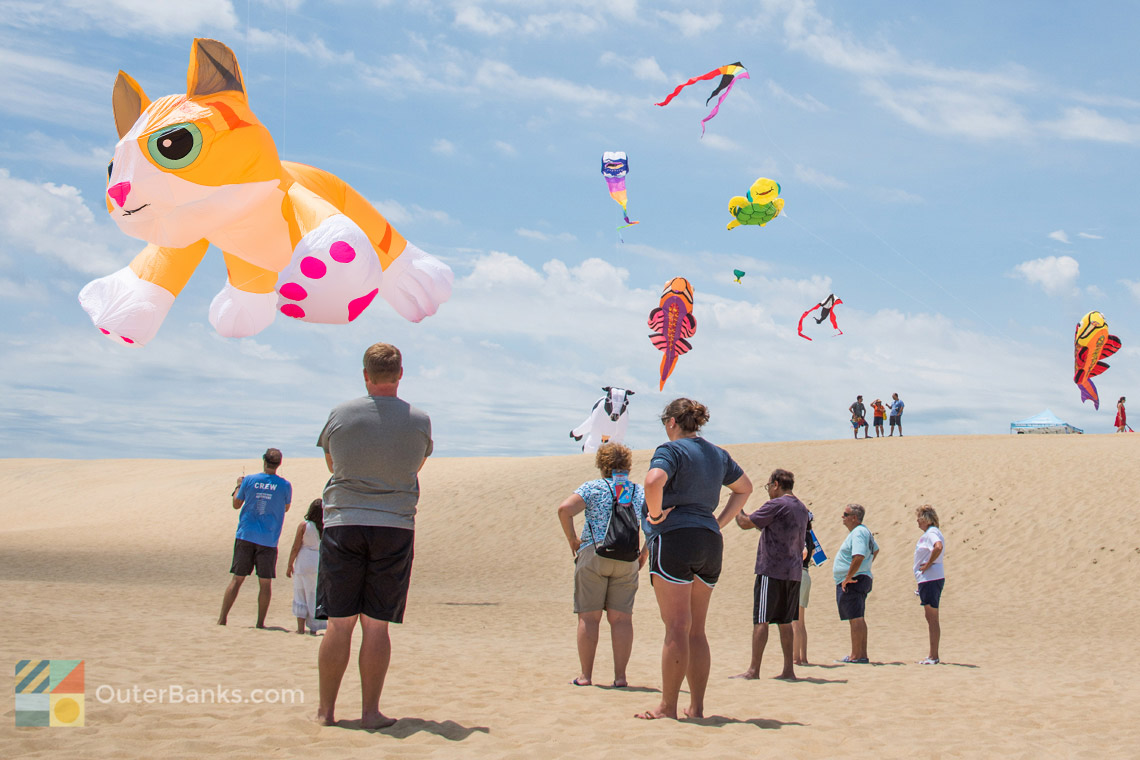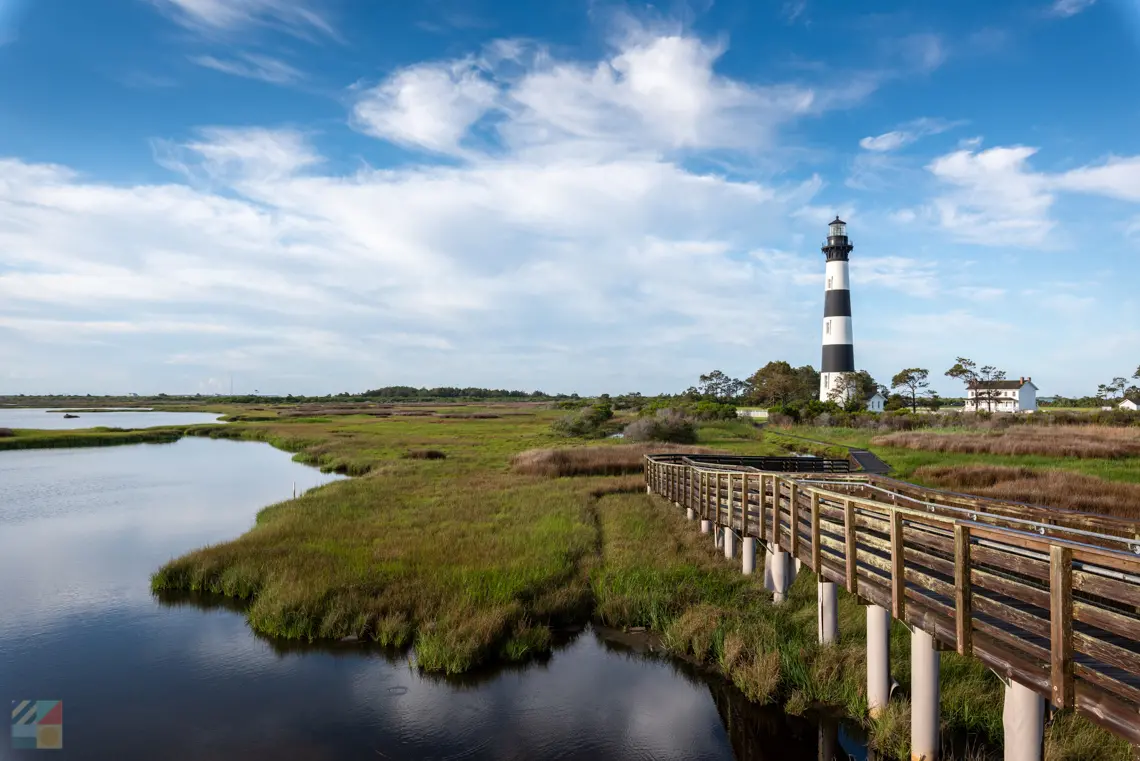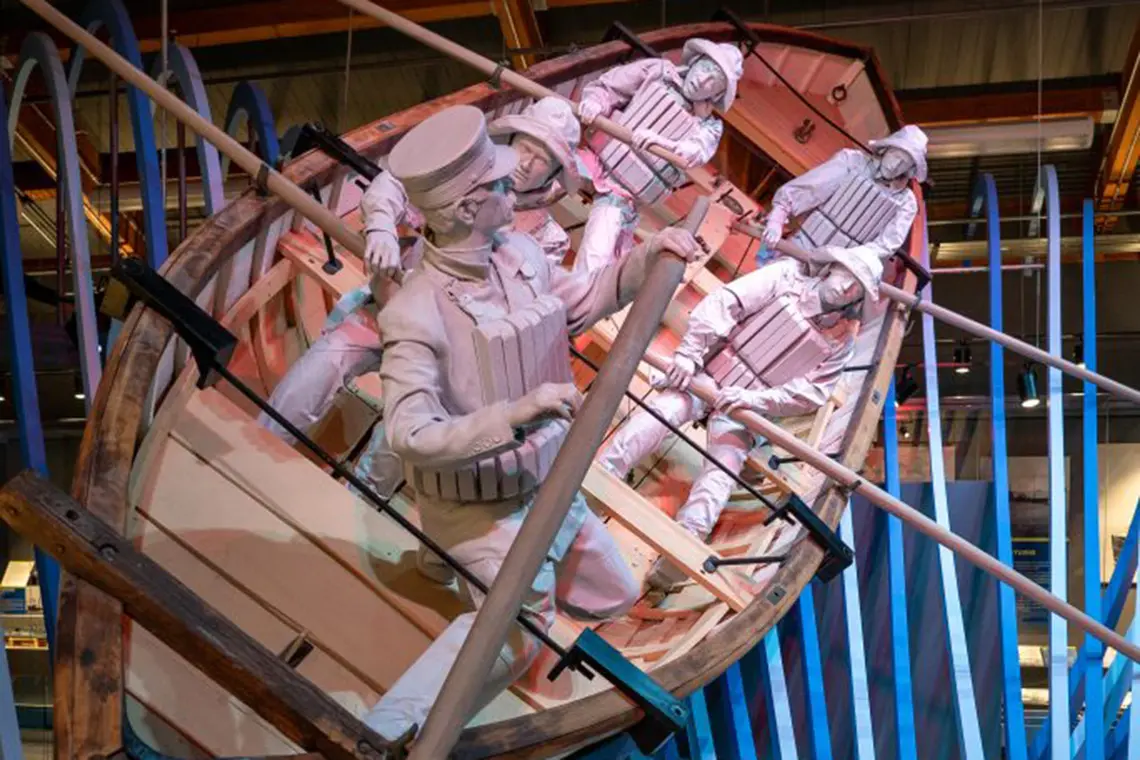Surfing Guide Sections:
Forget Hawaii and California - on the East Coast, the best place for surf is on the Outer Banks, and this region is renowned as one of the best surfing destinations from New York to Florida. Surfers from all over the country and the world flock to the Outer Banks for the annual ESA tournament, or just after a storm swell, to paddle out to the Atlantic and enjoy some of the best waves on the coast.
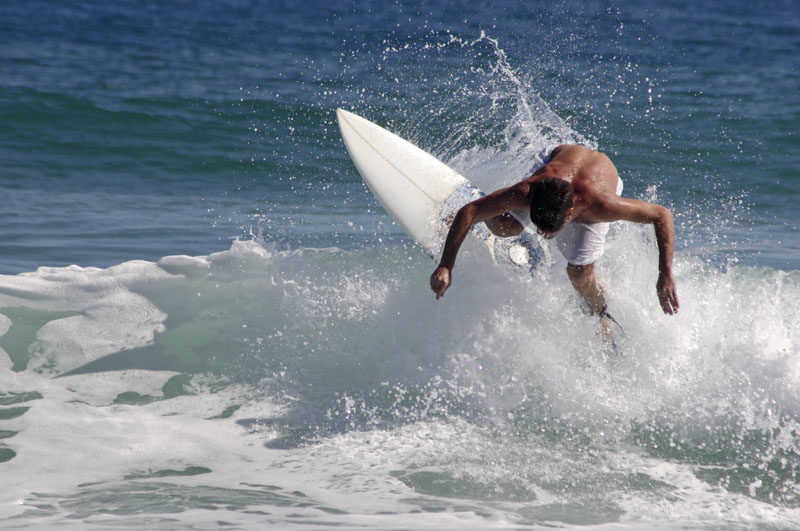
Luckily, you don't have to necessarily be an expert to paddle out. While there are some areas notoriously known for always having a series of exceptional, large waves, almost any beach can be a perfect practice ground for newcomers to the sport, and a number of local water sports companies offer lessons to visitors who have always wanted to hang ten.
There are a number of water sports on the Outer Banks, including kiteboarding, hang gliding, kayaking and even stand up paddle boarding, but for most locals, surfing trumps them all, and visitors are welcome to take a lesson, grab a board, and join the local surf scene.
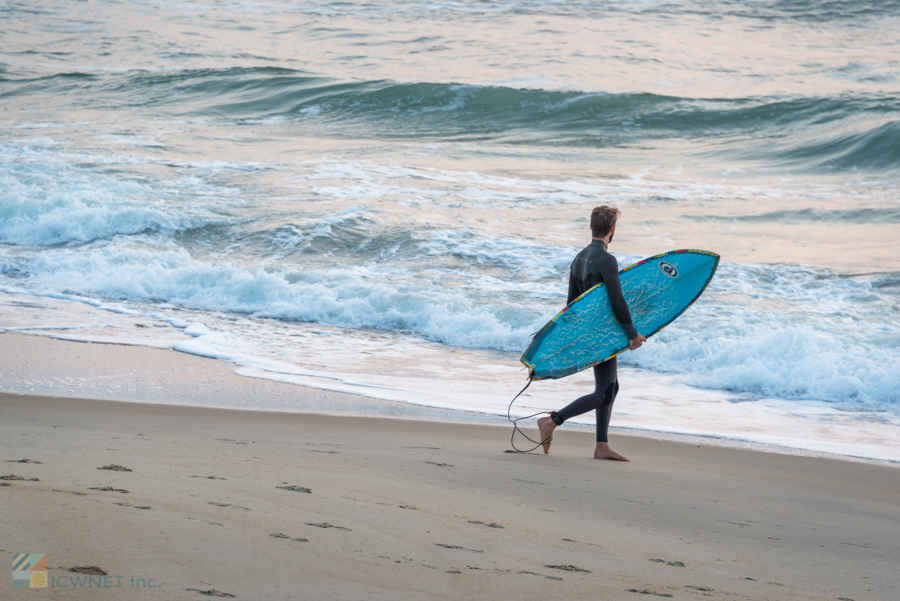
Top Surf Spots on the Outer Banks
Every Outer Banks surfer has their favorite spot, and some may be more secluded than others. For visiting surfers new to the area, a good rule of thumb may be to look for the collection of vehicles with "OBX" North Carolina license plates on the side of the road. Chances are, there's a good surf beach nearby.
That said, there are a number of spots along the Outer Banks that offer consistently good waves, and are considered by local and visiting surfers alike as some of the best surf spots on the East Coast.
Corolla and Carova - Corolla and Carova can have decent waves, and are especially popular in the summer months when water temperatures are perfect, and small swells make frequent appearances. Adventurous surfers can try travelling north, to Carova, where the beaches sometimes have more of a gradual sand bar, allowing waves to break further offshore, and are not as populated as the northern Outer banks beaches can be at their peak.
Duck Pier - The Duck Pier, like most local piers, has seasonally great surf on either side, although surfers are cautioned not to paddle out too close to the pier. In recent years, the Duck Pier has been the go-to place for Northern Outer Banks surfers, so expect some crowds, especially in the summer months and during a good spring or fall swell, when surfing in this area is at its best.
Kitty Hawk and Kill Devil Hills - Kitty Hawk and Kill Devil Hills boast a number of great surfing spots, including the waters off the Kitty Hawk and Avalon Pier, as well as the "Old Station" at Milepost 2, (locally known as the "Laundromats," perhaps in no small part due to its rough waves that can break close to shore and send a surfer into the wash.) All of these areas are hot after a storm, when the ocean waves are huge, as well as in the summer when the seasonal populations flourishes. Use caution, and watch out for those pier pilings - they can easily turn a good day of surf into a bad experience. Most local regulations require surfers to stay at least 100 yards from the pier, but luckily, good waves generally extend well past this barrier.
Nags Head - Nags Head offers a world of surfing possibilities, from the lesser known surf spots of South Nags Head on the beach road, to the famous surf off of Jennette's Pier. This location is arguably one of the Outer Banks' oldest surf spots, as vacationing surfers have been paddling out here since the 1940s, long before the 2011 restoration and remodeling. The rule of thumb in Nags Head is to generally drive along the beach road and find a beach - when the waves are good, it affects the whole area, and nearly any beach in Nags Head and South Nags Head could be producing some excellent waves.
Irene's Inlet - One of the newest surfing destinations is located adjacent to the informally named "Irene's Inlet." This inlet was formed in 2011 when Hurricane Irene barreled through the northern portion of Hatteras Island and carved out an inlet in between Rodanthe Village and the Herbert C. Bonner Bridge. A makeshift bridge was constructed over the inlet weeks afterwards, but months later, surfers and fishermen starting visiting this locale in droves for both its excellent surf and soundside and oceanside fishing. Park a little ways north of the inlet, and you'll find a gorgeous beach with a nice gradual sand bar, as well as plenty of local and visiting surfers. For one of the area's newest surfing locales, this remote beach has certainly garnered its fair share of followers.
The S-Surves - Further south is one of the Outer Banks' favorite surfing destinations, the S-Curves. The area, located directly North of the village of Rodanthe, originally got its name from the small series of twists and turns along NC Highway 12 that led into the village. Since that time, as storms and erosion has moved the only highway on and off the island west, the S-Curves may not be as "curvy," but they still retain their status as being one of the most beloved surfing destinations on Hatteras Island.
At the S-Curves, when the surf is good, it is simply fantastic. When there's a great swell, it's not unusual to see dozens of cars parked along the side of NC Highway 12, as well as camera crews stacked up along the top of the dunes. On great surf days, expect this area to be crowded, but expect it to be well worth the lack of elbow room - many visiting surfers attest that the S-Curves is as good as Outer Banks surfing gets.
Rodanthe Pier - Slightly south, the Rodanthe Pier also enjoys a healthy surf following, with a number of local and visiting surfers who have frequented this location for decades paddling out on a regular basis. Though not as popular as the S-Curves, this area can still be a little crowded when the surf is good.
Avon Pier - In Avon, a number of surfers flock to the waves off of Avon Pier as well as along the beaches bordering Kinnakeet Shores, a vacation home community located across from the island's only chain grocery store.
Buxton - Buxton is home to the other renowned local surf spot, the Cape Hatteras Lighthouse, or more accurately, the jetties where the lighthouse used to be. Relocated in 1999 further inland, the lighthouse's original home was a few hundred yards from its current location, where it was barely protected from the sea by a string of stone jetties that reached out into the Atlantic Ocean.
Hatteras - Today, the lighthouse is long gone, but those stone jetties combined with the beach's location just north of Cape Point provide consistently excellent breaks. A large National Seashore Parking area provides ample room for surfers, and the wide beach may sometimes be crowded, but when the surf is good, the crowd is most definitely worth it. Many local surfing competitions launch from the Old Lighthouse location, and after a few good sessions, visiting surfers will recognize that the combination of good waves, and consistent conditions, is the main reason why.
In Frisco and Hatteras, some surfers head to the 4WD accessible beaches for decent waves that are both on the smaller side and break well past a gradual sand bar. These areas are ideal for beginners, with small waves that slowly make their way towards shore. Located adjacent to two of southern Hatteras Island's best campgrounds, Frisco Woods and the Cape Hatteras National Seashore's campground, this destination is perfect for surfer's on a budget who want to enjoy some nice and easy waves.
Ocracoke Island - Ocracoke Island is another of those Outer Banks surfing locales where the surfing can be great for miles at a time. This area is a must after a summer storm, hurricane or Nor'easter as the gradual sloping beaches get a dose of large waves breaking barely offshore. Newcomers to surfing might want to head to the publiclifeguarded beach located about 2 miles south of the village. One of the Cape Hatteras National Seashore's only lifeguarded beaches, this area also offers plenty of parking as well as bathrooms and seasonal showers to clean up quickly after a good session.
No matter where on the Outer Banks you pick to paddle out, chances are there are a few decent waves waiting to be ridden. Just be sure and take extreme caution during stormy or exceptionally windy conditions. If the ocean is a stormy mess of white water and huge waves breaking close to shore, it might be best to sit this session out.
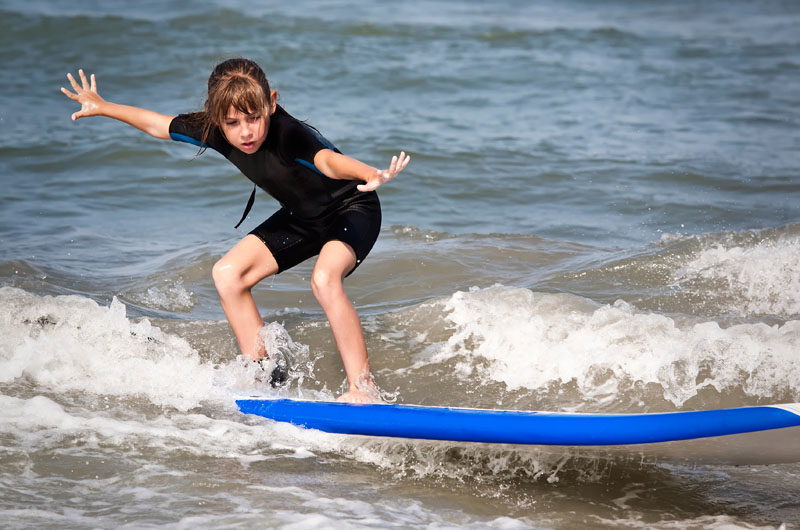
Surf Lessons
Newcomers to Outer Banks surfing will find there are plenty of options available when it comes to surf lessons, with the types of lessons ranging from private tutorials to group sessions. Lessons are also available throughout the Outer Banks, from the Corolla beaches to Ocracoke Island, so no matter where a surfing vacationer lands, there are resources available right around the corner.
Surfing newbies who want to catch a ride in a hurry can also enlist in surf camps. Generally comprising of 2-5 full day seminars, these local surf camps aim to get a rider from standing on the beach to standing on a board in just a few days of intense surf lessons.
Visitors interested in surf lessons can go through larger local companies, such as Kitty Hawk Kites, or local smaller businesses, like Hatteras Island Boardsports. Expect to get a strong instruction in the basics, including paddling and standing-up, and with good waves and good luck, a new surfer may find themselves upright on a nice long ride on their very first lesson.
Bear in mind, though, that when it comes to actually riding waves, surf lessons can often be only as good as the surf conditions, and if the waves are not optimal, it may be hard to land that first, great ride. Instruction in the basics is key, however, and a surf lesson or two can at least give beginners a good primer in paddling, wave conditions, timing, and how to hop up onto the board, regardless of the weather.
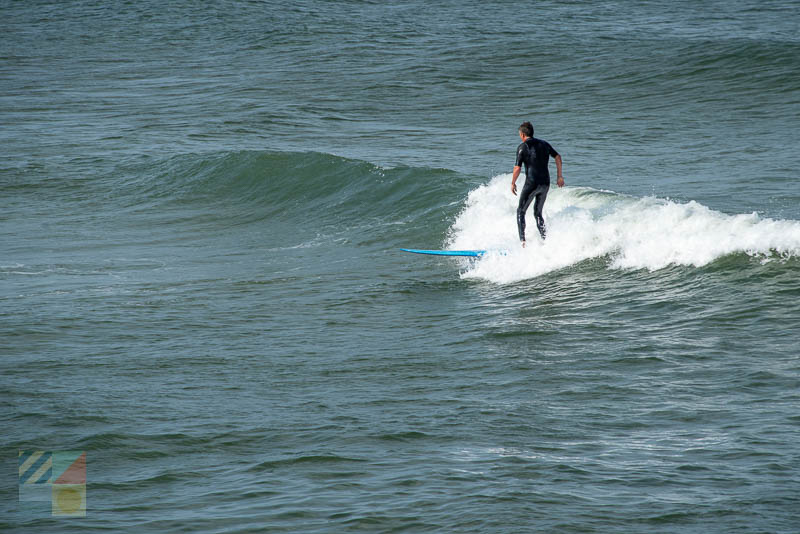
Surf Board Rentals and Sales
Just like there are a variety of lessons available, in the same vein, there are plenty of spots to rent or purchase a custom board in all regions of the Outer Banks as well.
Visitors will notice a cluster of brightly decorated surf shops all along the Outer Banks, from the NC 158 bypass to quiet NC Highway 12. Each of these shops offer both brand name and locally made and custom boards, and can tailor a new board to a surfer's particular taste.
In particular, In The Eye Surfboards in Buxton has been crafting local's surfboards for decades, and has an impressive selection of new surfboards for sale.
For vacationers who just want a taste of the local surfing scene, there are a number of local surf shops and rental businesses that offer surfboard rentals for a week or two. Check out Ocean Atlantic Rentals or Moneysworth Rentals, both of which have locations from Corolla to Hatteras Island, for weekly surfboard rentals during your vacation. A deposit may be required, and advance reservations, especially during the prime summer months, are suggested. Surfboards and other equipment can be rented well in advance of your vacation by calling or reserving online.
Like most Outer Banks sporting equipment, surfboards, wet suits, rash guards and other supplies can occasionally be purchased at a bargain price at the end of the season, typically around Thanksgiving.
Right before surf shops close for the year, particularly those that offer rentals or lessons as well, they will oftensell their gently used surf boards and equipment at a great price. Go early and do your research - when surfboards are on sale on the Outer Banks, they generally don't stay on the racks for very long.

Surfing Events and Competitions
There are a number of surfing competitions on the Outer Banks, including the Outer Banks Pro Surfing Competition, but arguably the grand-daddy of them all is the annual ESA (Eastern Surfing Association) competition held on Hatteras Island.
This competition helps determine who will compete from the East Coast on a national level, and has produced a lot of home grown and out-of-state surfing legends. As the largest amateur surfing association in the country, the ESA prides itself on scouting and showcasing talent from its own backyard, and every year dozens if not hundreds of eastern surfers flock to the Outer Banks for an opportunity to show their stuff in a succession of age-divided heats, which take course over the span of a week.
At night, the competing surfers mingle with each other at ESA events, and have an opportunity to meet with national sponsors and promoters who come to Hatteras Island find the next big local talent. The local Outer Banks ESA competition is generally held in the fall at the Old Lighthouse Location in Buxton, and during this time, it's not unusual to spot hundreds of surf lovers and reporters flocking to the area to enjoy the show.
Even non-surfers enjoy the event, as the ESA presents a range of locally and nationally legendary surfers strutting their stuff off the beaches of the Outer Banks. Participants are encourages to register early, and on-lookers would be well advised to bring a camera. The surfing demonstrated at ESA is, to put it bluntly, simply unreal.
There's a reason why surfing is the Outer Banks' longest running and arguably most famous sport. With consistently great wave conditions, plenty of homegrown local legends, and lots of rentals, custom-made surfboards, and competitions available, surfing is clearly ingrained in the Outer Banks' culture.
Vacationers with a love of the water, as well as a love of All Things Outer Banks, should take an afternoon or five to grab a board and paddle out to the Atlantic in search of waves. While surfing may be one of the region's most difficult sports to master, the reward is a lifetime knowledge of how to ride the waves, and an appreciation of the Outer Banks on a whole new waterfront level.
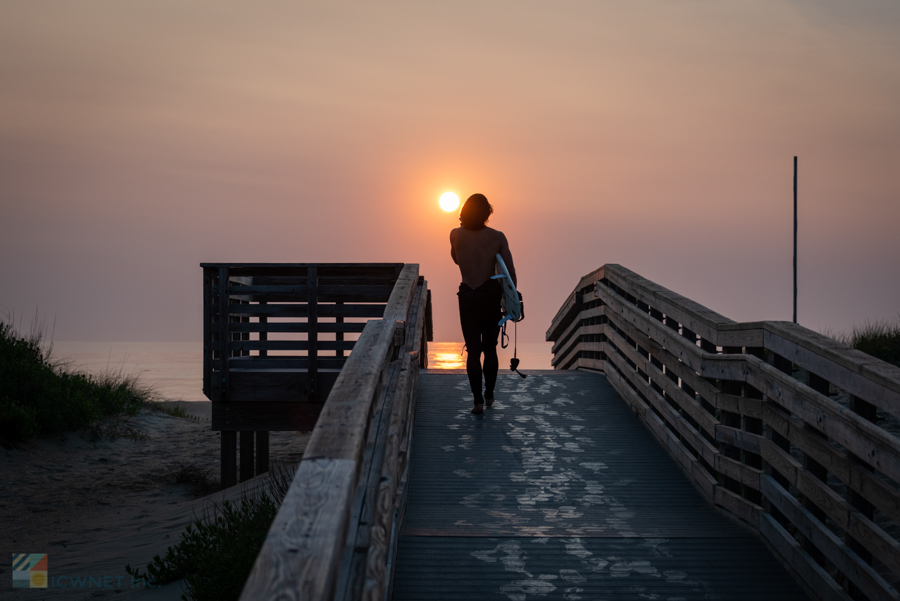
How to Surf
Essentially, surfing generally requires a lot of balance and a little timing. Newcomers to the sport will most likely want to start out with a longboard, a surfboard that is 8 ft.' long or more, and generally slightly wider and deeper than a standard short board. This provides a more stable platform, making it easier to "hop on" and stay balanced while enjoying the ride. Longboards are also quite a bit slower, allowing newbies to the sport ample time and room to practice turning and maneuvering.
As a surfer's experience increases, many move on to Phish Boards or Short Boards, which are meant for water acrobatics, including cuts, turns, and jumps in the waves. Shorter boards provide plenty of speed and a nimbleness that allows expert surfers to move freely through the ocean.
Other essential equipment includes surfboard wax, a leash, and a rash guard, a lightweight "shirt" that protects the surfer from irritating rubbing against the waxy board. In the late fall, winter, and spring months, a wet suit will also come in handy as the water temperatures on the Outer Banks generally remain somewhat frigid until mid-May. Spring suits, which are similar to a wet suit but are cut-off at the knees and elbows, provide surfers in the shoulder seasons a little extra warmth but a bit more flexibility than the standard full wet suit.
Before taking to the water, be sure and rub a good coat of wax on your surf board, which will help prevent the surface of the board from becoming slick and difficult to stand and maneuver on.
Surfing newcomers will most likely want to experiment with paddling first. Simply venturing out into the ocean past the close-to-shore breaking waves can be tricky, and before trying to ride the waves, it's helpful to have a grasp on how to speedily paddle out into the ocean, and "duck dive," under larger breaking waves in your path. These skills alone will keep a new surfer from wiping out, even before they have the chance to catch a ride.
Once in the ocean, timing is key. Surfers generally look for larger waves that are breaking well off-shore, about 30-50yards from the beach. Once the wave is seconds from breaking, the surfer starts paddling like mad. Then, once the break actually starts, it's simply a matter of climbing on board and barely outrunning the ocean wash that follows.
It might sound simple in theory, and there are certainly newcomers who pick up surfing after a session or too, but perhaps the most important lesson in surfing is to not get discouraged. Surfing can be an incredibly tricky skill to pick up, and it may take a number of sessions, or even a lesson or two, to fully get the hang of riding the waves. The bright side is that if you don't nail it on your first vacation, you'll just have to plan another Outer Banks vacation to improve your surfing skill.
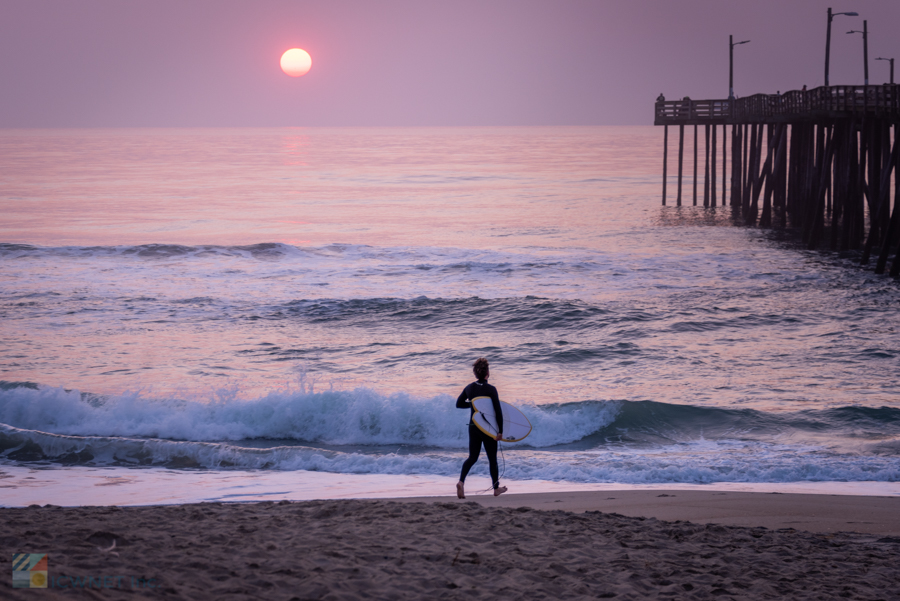
-
Tipsy Turkey Beer Mile
November 26th, 2025 10:00 AM -
Surfin' Turkey 5k and Puppy Drum Run
November 27th, 2025 -
Outer Banks Running Club OBX Gobbler 5K & Fun Run
November 27th, 2025 8:00 AM
Scientists run these dolphin tours as part of their research on these beloved aquatic animals, so you know this will be an interesting trip. Passengers will be able to see how researchers with the Outer Banks Center for Dolphin Research, a nonprofit...
The Bodie Island Lighthouse, (pronounced "Body") is located just south of the town of Nags Head and Whalebone Junction, where Highway 158, Highway 64, and NC Highway 12 intersect. Visitors travelling towards Hatteras Island can't help but notice the...
Corolla Wild Horse Tours knowledgeable guides will ensure you and your family have a great wild horse tour! Along the way the guides will stop and point out interesting sites and local history and details of the Corolla Wild Horses history. Be sure...
More than 2,000 shipwrecks sunk off the Coast of North Carolina in what’s called the Graveyard of the Atlantic. With all that history floating around, it was only natural to build a museum to honor and preserve the maritime culture of the...
